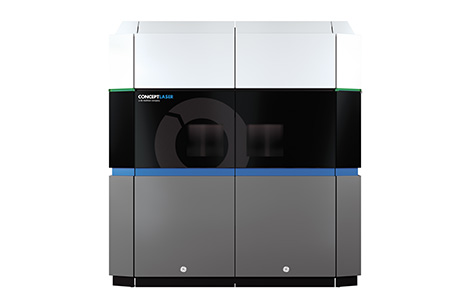
GE Additive’s beta concept is the first of its ‘metre-class’ 3D printers, with more to come soon
The first beta machine from GE Additive made its debut at Formnext, demonstrating the company is working well with acquisition Concept Laser on developing the next generation of large format metals 3D printer.
The machine has a focus on scaleability for large parts and components, with GE putting in great efforts to overcome the build envelop restrictions of powder-bed printers – motion control, airflow, powder management – yet the scale to which these products will finally grow is still being researched with the company’s customers around the globe.
GE Additive admits that size is still one of the biggest questions facing a metals 3D printing market still figuring out what it needs, and its new beta machine sees them poised with a flexible solution: a 1.1 x 1.1 x 0.3M bid area, with gantry-based architecture firing a new 1kW laser.
The insides are hooked up to a 3D scanner for build monitoring, while Predix , GE’s cloud-based process and machine health monitoring system keeps everything in check.
The company now has 11,000 staff globally, and this manpower – specifically between its US and German teams – has been leveraged to bring the beta machine to life in just 9 months, and from MVP stage to show floor in just 177 days.
“We’re working on larger machines than that, which are being built,” said GE Additive project leader Chris Panczyk. “We feel this is very disruptive technology, and everything that we’ve done is scaleable, we want to get a sense of how big these machines want to be so we can meet customer demand.”
“We find that this build volume accommodates a bunch of industries and a bunch of parts.”
The acquisition of APC, a specialist metals powder company, has brought further expertise in titanium to the company, but also sees them join the race to create a wider materials portfolio.
“Irrespective of industry, every customer has its own specific needs and its own unique levels of complexity,” said GE Additive VP and GM Mohammad Ehteshami.
“We regularly hear that next-generation machines need to be customisable and configurable. The new meter-class machine we’re debuting at Formnext is our response to that feedback – a solution that is scalable and customisable and meets the needs of our industry, as it matures.”






